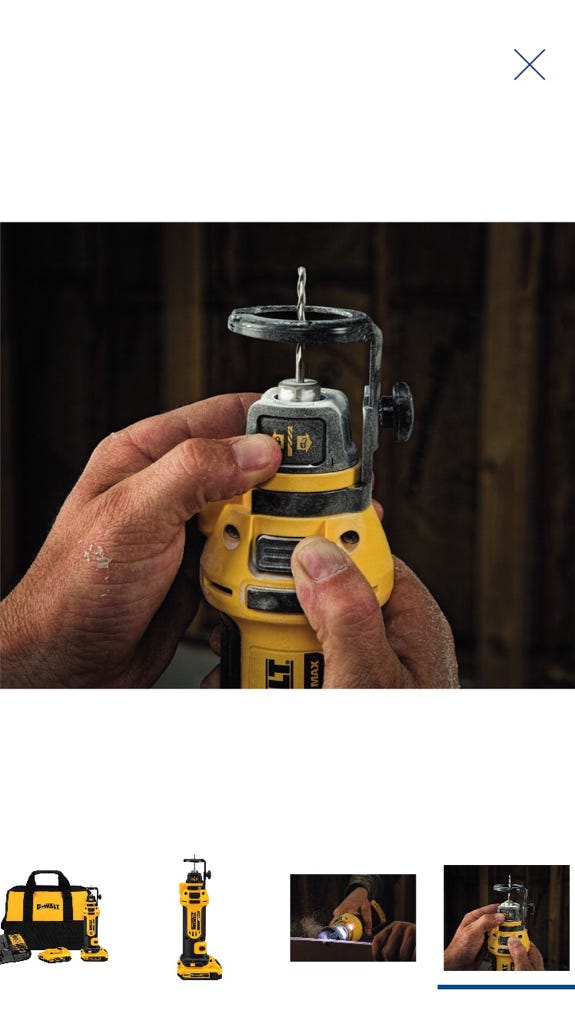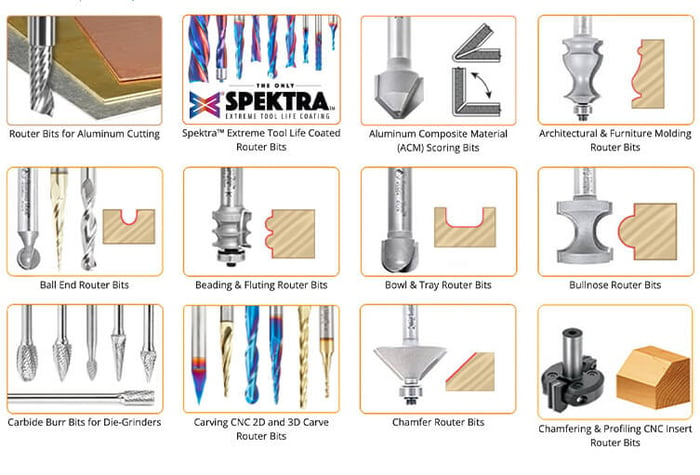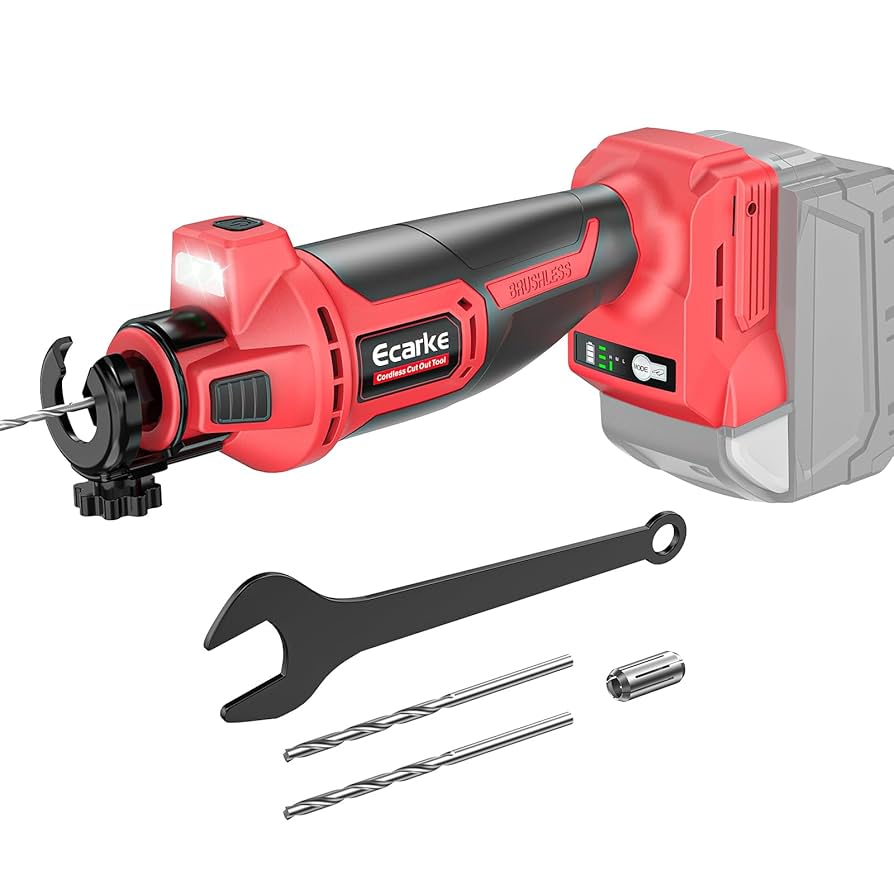Have you ever wondered if you can use a cut out tool as a router? If you’re tackling a woodworking project or a home improvement task, this question might be on your mind.
Knowing the right tool to use can save you time, effort, and even prevent damage to your materials. You’ll discover the key differences between these tools, when it’s possible to use one in place of the other, and practical tips to get the best results.
Keep reading to avoid costly mistakes and make your next project easier and more efficient.

Credit: www.contractortalk.com
Cut Out Tool Basics
A cut out tool is a handy power tool used for making precise cuts in wood and other materials. It is easy to handle and designed for detailed work.
This tool is often compared to routers, but it has its own unique uses and parts. Understanding its basics helps you decide if it fits your project needs.
What Is A Cut Out Tool
A cut out tool is a small, lightweight power saw. It has a narrow blade that moves back and forth rapidly. This motion allows it to cut through wood, drywall, plastic, and metal.
It is mainly designed for tight spaces and small cuts where larger saws cannot reach. The tool’s design helps users make clean and controlled cuts.
Common Uses For Cut Out Tools
Cut out tools are used in many home and professional projects. They work well for detailed cutting and remodeling tasks.
- Cutting holes for electrical outlets and switches
- Removing damaged drywall sections
- Trimming door and window frames
- Shaping wood for cabinetry or furniture
- Cutting pipes and metal sheets in tight spots
Cut Out Tool Components
The cut out tool has several key parts that help it work efficiently. Knowing these parts helps with safe use and maintenance.
| Component | Description |
| Motor | Powers the blade to move rapidly |
| Blade | Narrow, straight or curved for cutting materials |
| Handle | Ergonomic grip for control and comfort |
| Base Plate | Supports the tool and guides cutting depth |
| Speed Control | Adjusts blade speed for different tasks |

Credit: toolstoday.com
Router Function And Features
A router is a power tool used in woodworking. It shapes edges and cuts designs into wood. People often wonder if a cut out tool can work like a router.
This article explains what a router does, its types, and compares its parts. Understanding these helps decide if a cut out tool can replace a router.
Key Functions Of A Router
A router is mainly used to hollow out an area in wood or other materials. It trims edges and creates smooth finishes. It can also cut grooves and decorative patterns.
- Shaping edges of wood pieces
- Cutting grooves and channels
- Trimming laminates and veneers
- Carving decorative patterns
- Making joints for furniture
Types Of Routers
There are different routers for specific tasks. Some are handheld, while others mount to a table. Each type suits various woodworking needs.
- Fixed-base router:The bit height stays fixed during work. Good for edge shaping.
- Plunge router:The bit plunges into wood from above. Ideal for grooves and mortises.
- Combination router:Switches between fixed and plunge bases. Offers versatility.
- Trim router:Small and lightweight. Best for light trimming and detail work.
Router Components Compared
| Component | Router | Cut Out Tool |
|---|---|---|
| Motor Power | Usually 1.0 to 3.5 HP for strong cuts | Lower power, less suited for heavy cuts |
| Base Type | Fixed or plunge base for precise control | Often fixed, less adjustable |
| Speed Control | Variable speeds to match materials | Limited or no speed control |
| Bit Size | Supports various bit sizes for different cuts | Smaller bit sizes, less versatile |
| Depth Adjustment | Easy and accurate depth settings | Usually manual and less precise |
Cut Out Tool Vs Router
A cut out tool and a router are both used to shape wood and other materials. They look similar but serve different purposes. Understanding their differences helps you pick the right tool for your project.
This guide compares the power, control, and compatibility of cut out tools and routers. It explains when each tool works best.
Power And Performance Differences
Routers usually have more power than cut out tools. They can cut through thicker and harder materials. Cut out tools are lighter and made for smaller jobs.
- Routers have motors ranging from 1.5 to 3 horsepower.
- Cut out tools typically use smaller motors, around 3 to 6 amps.
- Routers handle long and deep cuts better.
- Cut out tools are better for quick, shallow cuts.
Precision And Control
Cut out tools offer good control for detailed work. They are easier to hold in tight spots. Routers provide precise cuts but can be harder to handle without experience.
| Feature | Cut Out Tool | Router |
| Weight | Light | Heavier |
| Control | Easy for small jobs | Better for detailed edges |
| Speed Settings | Limited | Multiple options |
| Cut Depth | Shallower cuts | Deeper cuts |
Tool Compatibility
Routers use a wide range of bits for different tasks. Cut out tools work with fewer bit types. Using the right bit is key to a clean cut.
- Routers fit straight bits, flush trim bits, and round-over bits.
- Cut out tools mainly use small straight bits.
- Adapters may allow some crossover but are not always safe.
- Always check the tool’s manual for compatible bits.
Using A Cut Out Tool As A Router
A cut out tool can sometimes be used like a router. Both tools help shape wood or other materials. But they work differently and are best for certain tasks.
This guide explains how you can use a cut out tool as a router. It covers where it works well, what to watch out for, and safety tips.
Possible Applications
You can use a cut out tool for small routing jobs. It works well for trimming edges and making shallow grooves. It is good for soft wood and thin materials.
- Edge trimming on plywood or laminate
- Cutting shallow grooves or dados
- Shaping small wooden pieces
- Detail work on craft projects
Limitations To Consider
A cut out tool is not designed to replace a router fully. It has limits in power and control. It can struggle with deep cuts or hard wood.
| Factor | Cut Out Tool | Router |
| Power | Lower | Higher |
| Control | Less precise | More precise |
| Cut Depth | Shallow cuts | Deep cuts |
| Material Hardness | Soft to medium | Soft to hard |
Safety Precautions
Safety is important when using any power tool. Using a cut out tool like a router needs extra care. Follow these rules to stay safe.
- Wear eye protection and gloves
- Secure your workpiece firmly
- Use the right bit for the job
- Keep hands away from the cutting area
- Check the tool for damage before use
- Work slowly and avoid forcing the tool
Expert Tips For Best Results
You can use a cut out tool as a router if you follow some key tips. This helps you get clean and precise cuts.
Using the right settings and preparing your workpiece well makes your project easier and safer.
Choosing The Right Bits
Select bits that match the shape and depth of your cut. Use bits made for routers for best results.
A sharp bit reduces tear-out and helps the tool run smoothly. Avoid dull or damaged bits.
- Use straight bits for clean edges
- Round-over bits smooth corners
- Flush-trim bits copy shapes accurately
- Choose carbide bits for longer life
Adjusting Speed And Depth
Set the tool speed based on the bit size and material type. Slower speeds work better for large bits.
Cut in shallow passes to avoid stress on the bit and tool. Multiple passes give cleaner cuts.
- Lower speed for big or dull bits
- Higher speed for small, sharp bits
- Start with shallow depth per pass
- Increase depth gradually if needed
Workpiece Preparation
Secure the workpiece firmly to avoid movement. Clamp it on a stable surface before cutting.
Mark your cut lines clearly. Clean the surface to remove dust or debris that can affect the cut.
- Use clamps to hold the workpiece
- Draw clear cut lines with a pencil
- Check for nails or screws before cutting
- Clean the surface for smooth cuts
Alternatives And Accessories
A cut out tool is versatile. But can it replace a router? Let’s explore this idea and see what options and accessories can enhance its use.
We will also discuss when a dedicated router might be the better option for your woodworking tasks.
Router Attachments For Cut Out Tools
Router attachments can transform a cut out tool. They allow it to perform similar tasks to a router. These attachments fit on the tool, enabling it to cut grooves, edges, and more.
- Edge guide attachment for straight cuts
- Plunge base for controlled depth cuts
- Dust collection port to keep your workspace clean
Recommended Accessories
Accessories enhance the functionality of a cut out tool. They help achieve more precise and varied cuts.
| Accessory | Function |
| Collet adapters | Fit different bit sizes |
| Router bits | Different cut profiles |
| Circle cutting guide | Perfect for round cuts |
When To Use A Dedicated Router
Sometimes a dedicated router is the better choice. It offers more power and precision for certain tasks. Consider using a dedicated router for heavy-duty or detailed work.
- Complex edge profiles
- Thicker materials
- Large volume projects

Credit: www.youtube.com
Frequently Asked Questions
Can A Cut Out Tool Replace A Router Effectively?
A cut out tool can perform some router tasks but lacks versatility. It’s ideal for light trimming, not heavy routing. Routers offer more precision and power for complex woodworking projects. Use a router for detailed cuts and shaping.
What Are The Main Differences Between Cut Out Tools And Routers?
Cut out tools are lightweight, designed for small cuts and trimming. Routers are more powerful, suited for detailed shaping, grooves, and edges. Routers provide adjustable depth and speed, unlike most cut out tools. Choose based on project complexity and precision needed.
Is It Safe To Use A Cut Out Tool As A Router?
Using a cut out tool as a router is generally safe for light tasks. However, it may lack the stability and control of a router for detailed work. Always wear safety gear and follow the tool’s guidelines to avoid accidents.
Can A Cut Out Tool Handle Deep Or Intricate Cuts?
Cut out tools are not ideal for deep or intricate cuts. They work best for shallow trimming and simple shapes. For deep grooves or complex patterns, a router is more suitable and provides cleaner results.
Conclusion
A cut out tool can do some jobs like a router but not all. It works well for light tasks and simple shapes. For deeper cuts or detailed work, a router is better. Choosing the right tool saves time and keeps your project safe.
Always think about what you want to do before starting. This helps you pick the best tool for the job. Use tools carefully and enjoy your woodworking projects.


